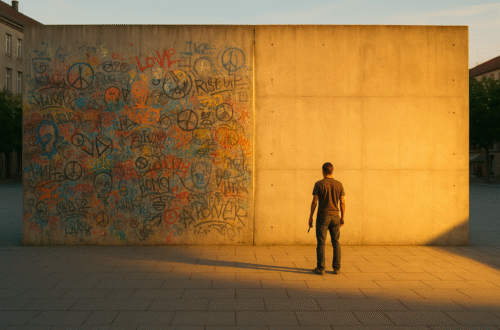“We do not see things as they are, we see them as we are.”
So mused Anaïs Nin, French born, of Cuban parentage, essayist and novelist, with the kind of devastating brevity that causes me to pause mid-thought and consider whether I have ever truly seen anything at all.
As a curious seeker who has spent more than a few years navigating libraries, lecture halls, and late-night conversations, I must confess—this quote unsettles me. Not in the way a bad meal unsettles, but more like the chill that comes when one realizes the mirror has been fogged, and all this time we were admiring not the landscape, but our own breath upon the glass.
We are, each of us, walking kaleidoscopes—our past, our pain, our pleasures all forming shifting patterns through which the light of reality must pass. And so, rather than seeing the world in its naked form, we clothe it—sometimes in fear, sometimes in fantasy, often in the faded garb of assumptions long unexamined.
Take, for example, a simple interaction: a stranger’s frown across a crowded room. Is it disapproval? Contempt? Or indigestion? The answer depends less on the stranger than on us. A person carrying the weight of rejection will see disapproval. One raised on suspicion may see a threat. And yet, the poor stranger might simply be trying to remember if he left the stove on.
Thus it is that our inner worlds leak, seep, and at times gush into the world around us. We project not only our feelings but our fears, our biases, our unmet longings. The cynic sees corruption; the romantic, possibility; the wounded, danger. It is not the world that is always changing—but the lens through which we gaze at it.
Now, I must not be misunderstood. This is not an appeal to moral relativism, nor a declaration that reality is purely subjective. There is a world out there—solid, specific, and often gloriously indifferent to our interpretations. But our access to it, our interpretation of it, is inextricably tangled with who we are in the moment of perceiving it.
Consider the implications of this for our relationships, our politics, our spiritual lives. How often do we accuse others of faults we dare not acknowledge in ourselves? How often do we mistake discomfort for danger, or challenge for cruelty? We respond not to the facts before us, but to the stories we have unconsciously written in their place.
And here lies the peril: if we do not examine our own patterns, we risk living in a world of our own projections, mistaking the echo of our own voice for the voice of truth. Worse still, we risk harming others—labeling, blaming, rejecting—not for who they are, but for who we are afraid they might be.
But all is not despair. For the very fact that we project means that we can become aware of the act of projecting. Like a candle suddenly illuminating a dim study, self-awareness gives us the power to pause, to question: Is what I’m seeing truly there? Or is it a shadow cast by something within me?
So, dear friend, I offer not a conclusion, but a gentle invitation as much to myself as to you. Become a student of our own responses. Notice when our reaction seems larger than the situation warrants. Observe the emotional heat behind our judgments. Ask, humbly and often: What in me is meeting this moment?
For in cultivating this awareness, we inch closer to seeing things as they are—not scrubbed clean of subjectivity, but seen through clearer, more honest eyes. And perhaps, in that clarity, we not only better understand the world—but become a little more gracious, a little more kind, with ourselves and with others.
After all, the world needs less projection and more presence. Let us begin with our own.





